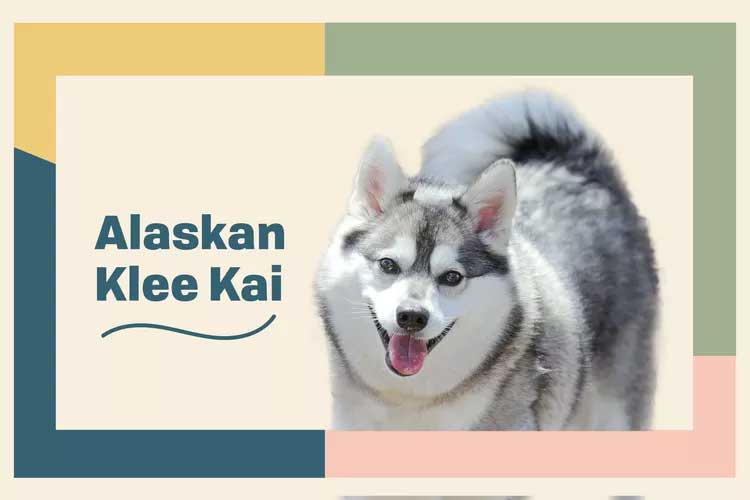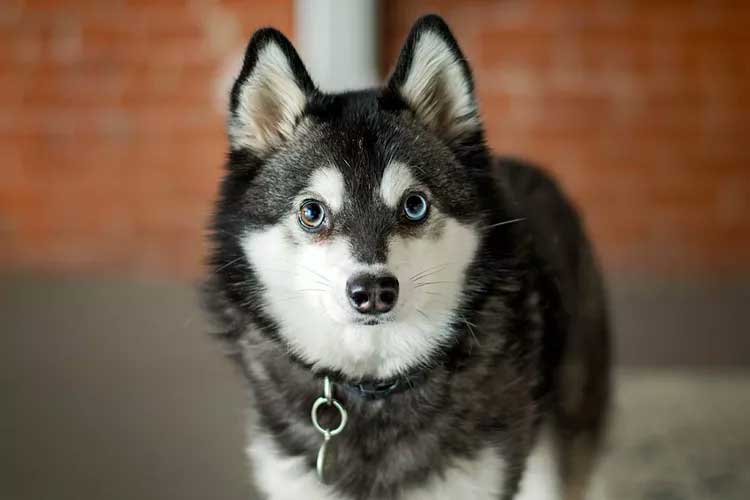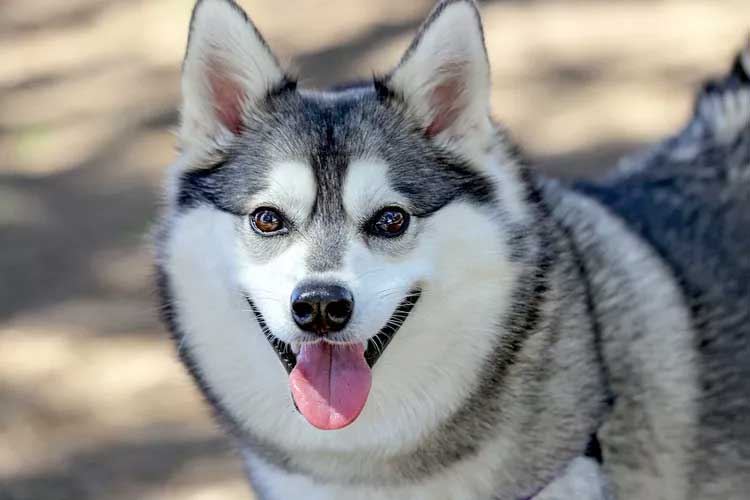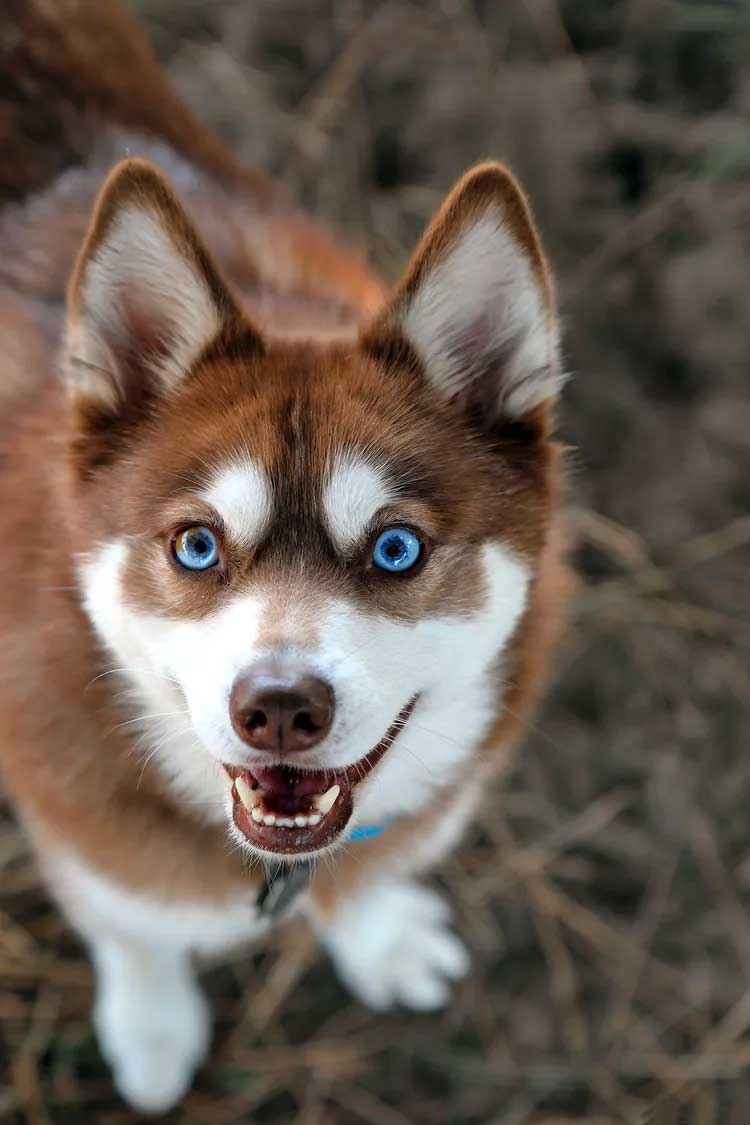The Alaskan klee kai is an active, intelligent, and loyal breed who loves spending time outdoors with her family. Learn more about living with these pint-sized huskies.

Alaskan Klee Kai Overview
| OFFICIAL NAME | Alaskan Klee Kai |
| COMMON NAME | Alaskan Klee Kai |
| PET HEIGHT | 13 to 17 inches |
| PET WEIGHT | 6 to 25 pounds |
| LIFESPAN | 13 to 16 years |
| GOOD WITH | children, dogs, families |
| TEMPERAMENT | friendly, gentle, playful, willful |
| INTELLIGENCE | high |
| SHEDDING AMOUNT | frequent |
| EXERCISE NEEDS | high |
| ENERGY LEVEL | active |
| VOCAL LEVEL | howler |
| DROOL AMOUNT | low |
| BREED GROUP | none |
| BREED SIZE | small (0-25 lbs.) |
| COAT LENGTH | medium |
| COLORS | black, gray, red, white |
| PATTERNS | bicolor |
| OTHER TRAITS | cold weather tolerant, good hiking companion, loves water, requires lots of grooming, strong loyalty tendencies |
The Alaskan klee kai takes her name from her Alaskan roots. Descended from the intelligent, active Alaskan huskies known for their strong work ethic and invaluable sled-pulling, hunting, and tracking abilities, the Alaskan klee kai packs all that athleticism and loyalty into a miniature body.
Unlike huskies, the AKK has a much smaller stature—the standard Alaskan klee kai is just 15–17.5 inches tall and weighs under 25 pounds; there are miniature and toy versions of the breed, too. Their small size, easygoing nature, and affectionate temperaments make them sought-after family pets. Although AKKs make wonderful companions for active families, the breed was just introduced in the late 1980s and is still quite rare.
Appearance
At first glance, the Alaskan klee kai looks like a miniature version of an Alaskan or Siberian husky—and that is one of the reasons the breed is so coveted, says Sherry Holloway, president and historian for the Alaskan Klee Kai Association of America (AKKAOA)."Their small size and appearance of a small Siberian [husky] draws people to the Alaskan klee kai," she says.

Size is one of the biggest differences between an Alaskan klee kai and a husky. Though all are small, full-grown Alaskan klee kai can be three different sizes: Toy, miniature, and standard.
Toy Alaskan klee kai are less than 13 inches tall and weigh just 6–12 pounds.
Miniature Alaskan klee kai are between 13–15 inches tall and weigh 10–18 pounds.
Standard Alaskan klee kai are 15–17.5 inches tall and weigh between 16–25 pounds.
Alaskan klee kai and huskies have different facial markings, too. Holloway says the breed standard requires an AKK to have a symmetrical face mask and body markings.
Their double coats, which consist of a soft, dense undercoat and medium-length, straight outer coat, have markings in contrasting dark and light colors, commonly white with shades of black, grey, or red.

Her eyes, which are just as striking as a husky's, can be any combination of colors. And, also like huskies, Alaskan klee kai can have heterochromia: Two different-colored eyes, or one eye that's two colors.
Temperament
The Alaskan klee kai dog is known for being affectionate, outgoing, and eager to please; they love spending time with their owners and have a happy-go-lucky attitude, but, Holloway says, can be reserved with strangers. In fact, vigilance is one of their breed traits: The watchful AKK, like huskies, will "talk" to let you know that a stranger is approaching."AKK talk resulting in strange noises of howling, grumbling, yodeling, [and] purring to express themselves," Holloway says.

The ancestral husky desire to work remains strong in the Alaskan klee kai. But unlike their larger ancestors, these dogs are too small to pull dog sleds. So it's essential to provide other activities to channel their energy—they'd love food puzzles and interactive toys!
"AKK are very active with a medium-to-high energy level, so regular exercise is a must," Holloway says. "AKK enjoy performance sports [like agility, rally, and obedience] or just hiking with their human."
With the right introductions, AKK get along well with other dogs and children who know how to properly interact with pets. And, as with all dogs, Alaskan klee kai puppies need to be well-socialized, and training is a must.
"AKK require early training," Holloway says. "They are very smart and willing to learn, but can have a [willful] streak; they also need to be mentally challenged because they have been known to outsmart their owners."
Living Needs
There isn't a one-size-fits-all living situation for the Alaskan klee kai: The breed will live happily in an urban apartment, suburban home, or expansive farm. As long as she's well-exercised and gets to spend plenty of time with her family, she'll be a happy dog."All AKK have different personalities," Holloway says. "Some are more active than others; some are happy as lapdogs."
No matter your living situation, Holloway says Alaskan klee kai owners need to be vigilant while their pups are outside. These dogs are curious, speedy, and might try to chase squirrels, birds, and other small creatures that catch their eye. It's important to keep them on a leash or in a secure, fenced-in area. Never leave them outside unattended. Other options for safe off-leash play, including dog parks or doggie daycare, can help the AKK satisfy her desire to go-go-go.
"AKK are independent-thinking problem-solvers with the ability to escape by climbing, digging, and squeezing through small openings," Holloway says. She's practically Harry Houdini in a furry, four-legged body.

Got a favorite form of exercise? Chances are your Alaskan klee kai will love it, too. From running and hiking to swimming and fetch, she's down for it. She'll also excel in dog sports including agility, flyball, rally, and obedience, which meet her physical and mental stimulation needs. As Holloway says: "A tired AKK is a well-behaved AKK."
The Alaskan klee kai develops strong bonds with her owners and should be treated as a member of the family. With this love (and her adventurous spirit), she'll prefer not to spend too much time alone.
Care
In addition to providing plenty of exercise and lots of quality time, the high-energy and social Alaskan klee kai also requires regular grooming. Their double coats offer protection from the cold but are prone to shedding. A lot.Holloway recommends weekly brushing or combing to keep that fur from flying all over your house. You might have to brush an Alaskan klee kai dog more often during semi-annual "shedding seasons" when the dogs blow their undercoats in spring and fall. But there's good news: Because the Alaskan klee kai's coat repels dirt and she has no distinct "doggie odor," Holloway says AKK's don't regularly need baths.
As with all breeds, you'll need to keep her nails trimmed, her teeth clean, and her ears free of wax.
The Alaskan klee kai requires consistent positive reinforcement training. Although the breed loves spending time with their owners and can be eager to please, their willful streak could come out during training. Holloway recommends starting training early and incorporating a combination of physical and mental games to help them master basic commands.

Health
The Alaskan klee kai has a long lifespan of 13–16 years and is considered a generally healthy breed. But it's important to watch for some health conditions that could affect your dog, according to the AKKAOA.Patellar luxation: This is a condition where the kneecap dislodges from its position. The cause of patellar luxation is unknown, but it could be related to injuries or malformation of the joints and bones. It’s most common in small breed dogs, such as the Alaskan klee kai. Depending on its severity, the kneecap may return to its normal position on its own or, in severe cases, surgery may be needed.
Factor VII deficiency: This is an inherited blood clotting disorder that can cause excessive bruising or bleeding from small wounds. It’s a gene mutation that affects Alaskan klee kai. Genetic testing can determine whether your dog has Factor VII deficiency.
Thyroid disease: Hypothyroidism is when the thyroid gland is underactive, causing metabolism to slow down. This condition is treatable, and owners should alert their vets if symptoms such as weight gain, lethargy, an intolerance to cold, or excessive shedding and dry fur are detected.
Before bringing home an Alaskan klee kai puppy, make sure your breeder conducts all the necessary tests and health screenings so you know you're getting a healthy dog.
History
A small grey and white husky named Curious inspired the development of the new breed. Breeder Linda Spurlin acquired the dog during a trip to Oklahoma and took her home to Alaska, where her diminutive size and adorable appearance made Curious a local celebrity, according to the AKKAOA.The local interest in little Curious led Spurlin to establish a breeding program, crossing smaller Alaskan huskies to create her ideal vision of color, pattern, and temperament. The result: A husky-like pup with beautiful, symmetrical markings, in a compact size.
The Alaskan klee kai were named in honor of their heritage: The breed was developed in Alaska, and "klee kai" are Inuit words meaning "little dog."
Although Spurlin started developing the breed in 1970, she didn't start selling Alaskan klee kai puppies until 1987. Because Alaskan klee kai are still a relatively new breed, they're rare—but breed clubs are working to broaden knowledge of the breed and encourage AKK ownership.
Fun Facts
Alaskan klee kais have some famous fans: Musician Joe Jonas and Game of Thrones actress Sophie Turner are Alaskan klee kai parents. New England Patriots general manager Bill Belichick also owns an AKK.Two AKKs, Creature and Ripley, are Insta-famous with 377,000 followers on their account.
The Alaskan klee kai is part of the American Kennel Club's Foundation Stock Service group. The breed is also fully recognized by the Federation of International Canines, the American Rare Breed Association, and the United Kennel Club, according to the AKKAOA.